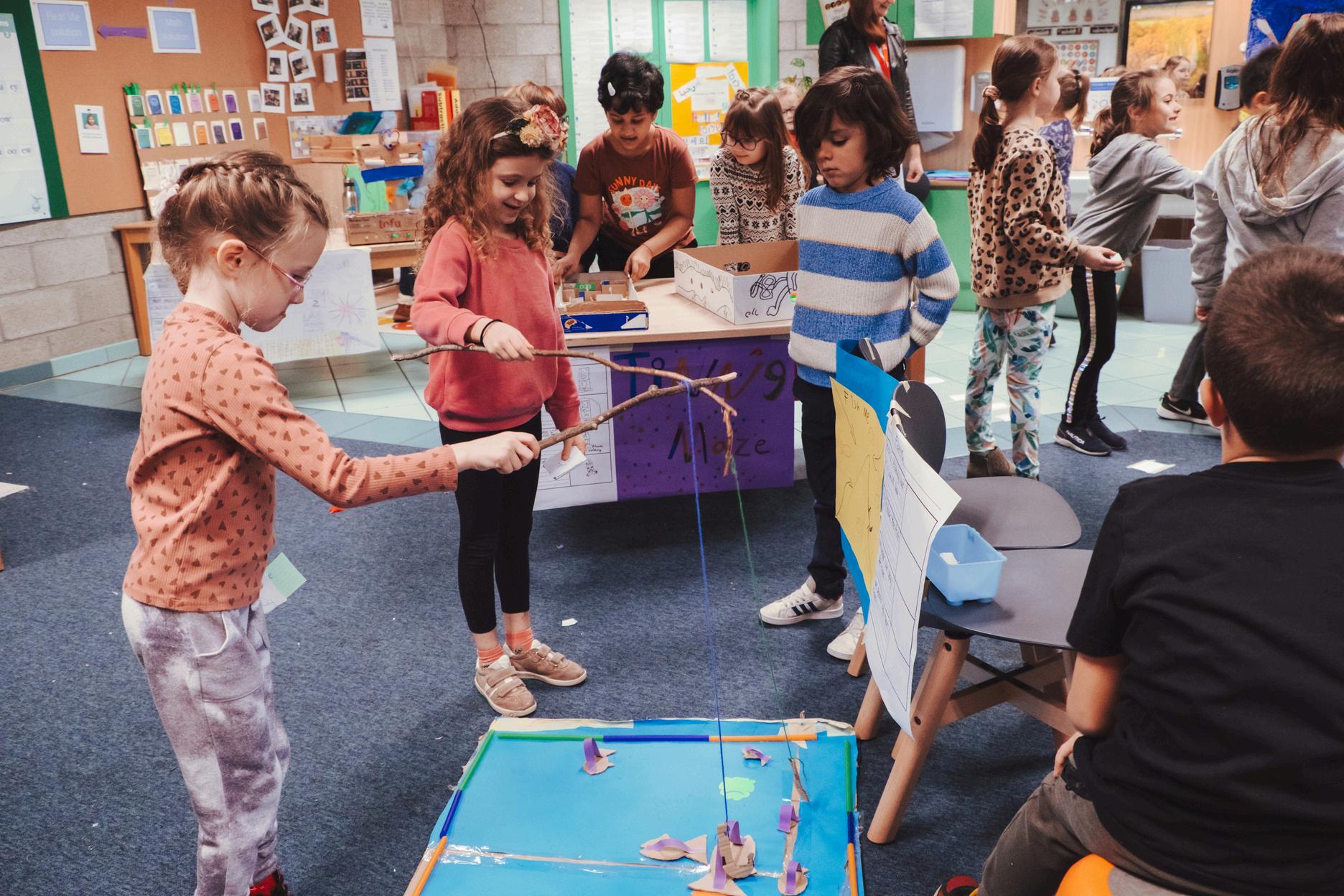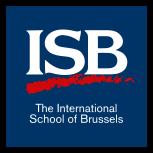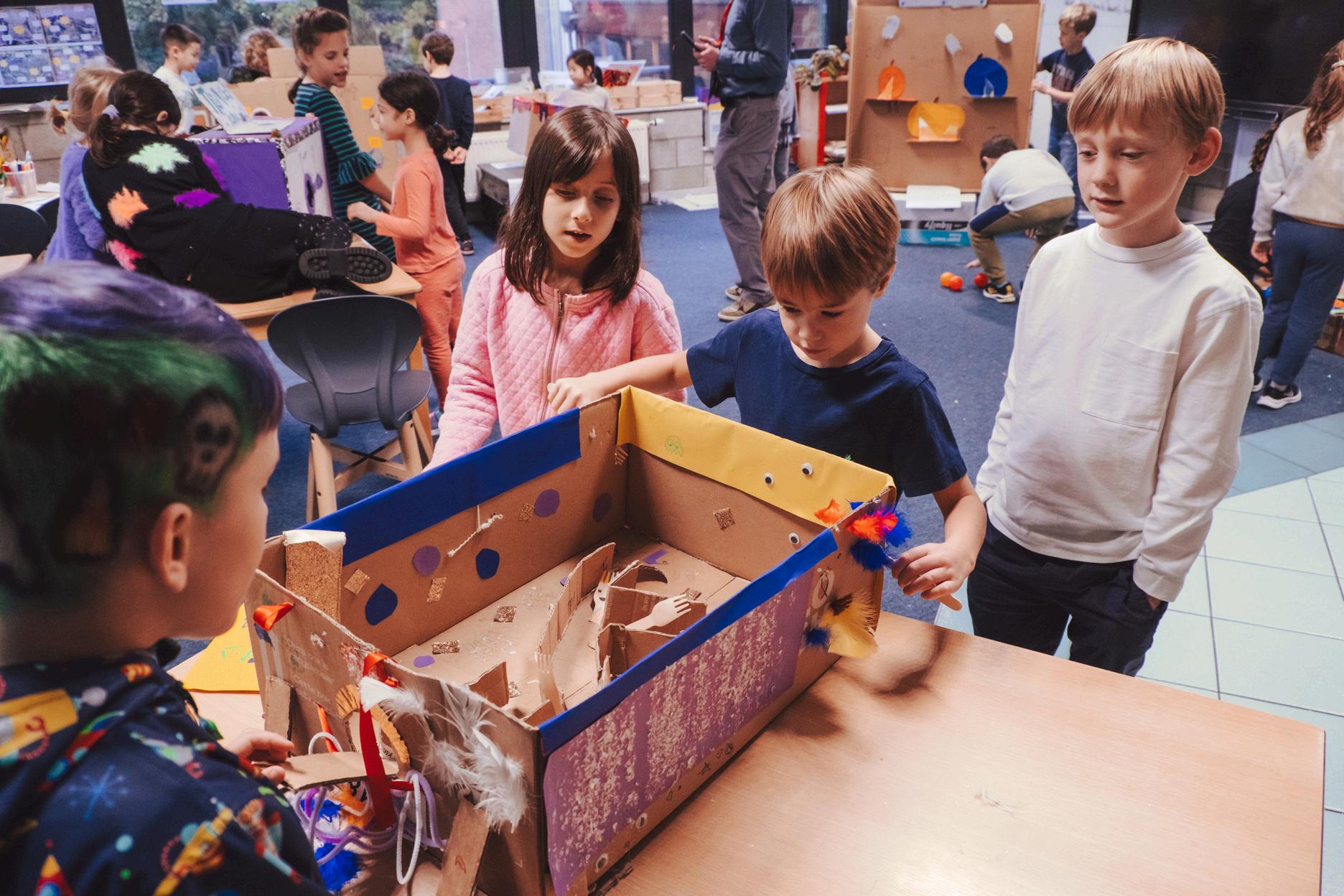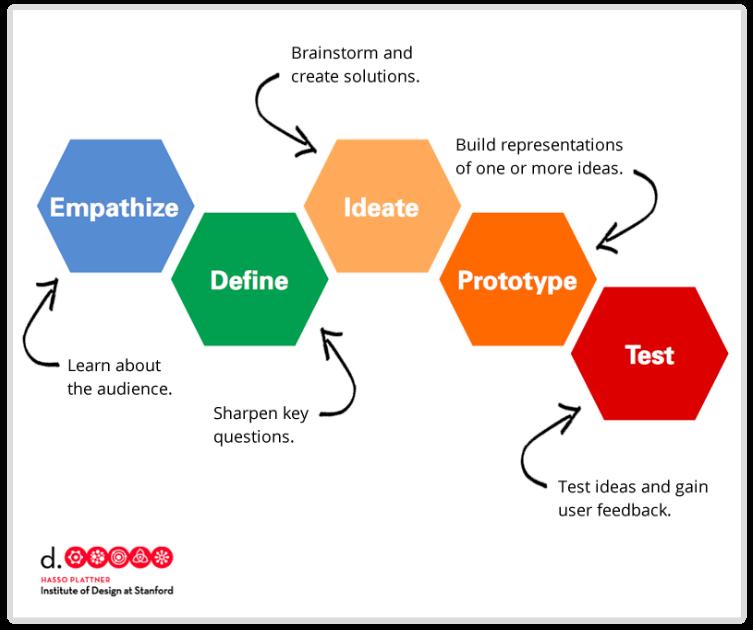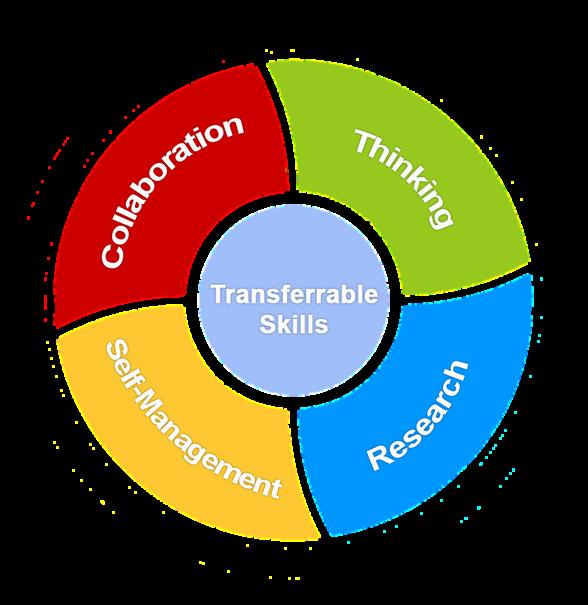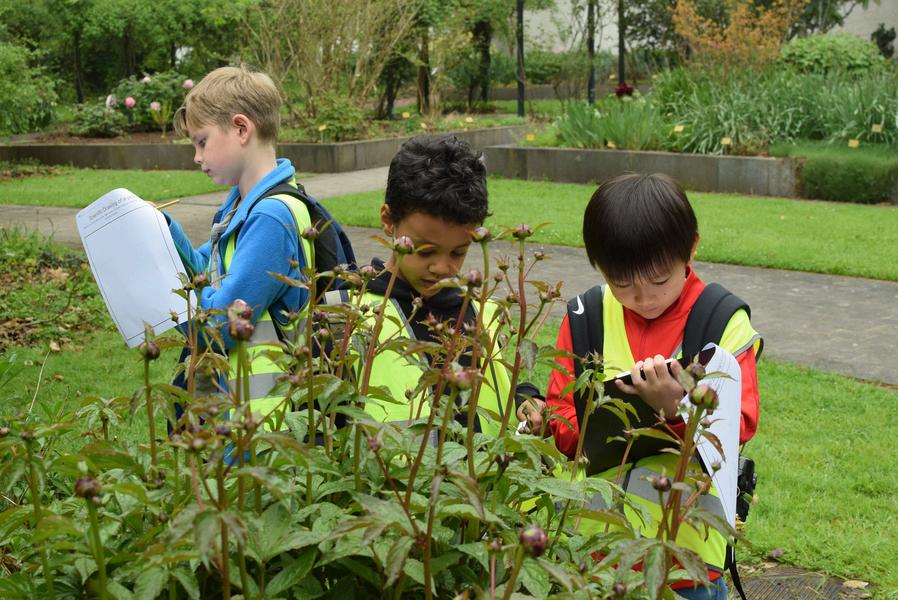THEGRADE2EXPERIENCE KeyDevelopmentalMilestones BeingtheoldeststudentsintheEarlyChildhoodCentre,Grade2provides ourstudentsarangeofmeaningfulleadershipopportunitesastheybuild ontheirdeepunderstandingofhowtheiractionsaffectothersandbeginto explorehowtheiractionscanserveasamodelforothers.Havingbecome morecompetentreaders,writersandmathematiciansthestudentshave opportunitiestousetheseskillsinmeaningfulprojectsthataimtoleadand helpothers.
PersonalisingLearning IntheLowerSchoolatISBwe embracetheuniquepotentialwithineachlearner tailoreducationalexperiencestoindividualstrengths,interests&pace empowerlearnerstoexploretheirpassions integratetechnologyseamlessly cultivatecriticalthinking,andcollaborateacrossdiverseperspectives developlearnerswhoconfidentlynavigatethecomplexitiesofourworld
BECOMING INTERNATIONAL CITIZENS ISBbelievesthatinordertobeInternationalCitizens,successfulinandoutof school,studentsneedtolearnanddevelopsocialandemotionalcompetencies. ThesecompetenciesaregroundedinourCharacterStandards. C h a r a c t e r S t a n d a r d s
SoundandLight OurAction Plants Description
Connected Disciplines
Conceptual Understandings
Understandinghowsoundandlightare createdandmodified
Science-PhysicalSciences Learnersunderstandthat:
Soundisproducedbyarangeof vibratingsourcesandthewaywesense thesounds(pitch,volumeetc)depends onthenatureofthevibrations. Lightisproducedbyarangeofsources andcanbesensedandusedina varietyofways.
Understandingthatouractionscanhavea positiveornegativeimpactonthe communitiesthatwearepartof
Socialstudies-Collaborationand Citizenship
Learnersunderstandthat: Rightsonlyworkwhenwealsoliveupto therelevantresponsibilities.
Groupscancollaboratetomakerulesbut thatsometimestheyaregivenbythosein authority.
Scarcityofresourcesmeanswehaveto makedecisionsabouthowtoallocate themandtheresultingimpactonthe communitiessharingtheresources. Inagroupwecanhelpeachotherto achieveagoalsometimesbetterthanwe couldonourown.
Leadershavepoweroveragroupand thatideallythisentailsresponsibilitiesto thegroup.
Understandingthebasicneedsofplantsand howtheychangeandreproduce
Science-PhysicalSciences
Learnersunderstandthat:
Livingthings(plants)havebasicsurvival needsincludingfood,waterandshelter, whicharemetbytheirenvironment (adaptation).
Livingthings(plants)grow,changeand haveoffspringsimilartothemselves(life cycles).
Livingthings(plants)haveavarietyof externalfeatures(classification).
Learning Engagements
Understandingthepropertiesofsoundandlight allowsustomanipulatethesephenomenaand interactwiththem Lightisapowerfultoolfor exploringtheuniversearoundus Throughthis unit,studentsexploredifferentsourcesoflight, bothman-madeandnatural Theywillconduct researchintothedifferentwaysinwhich humansandotherlivingthingsuselight Understandingthepropertiesofsoundallowsus tomanipulateandcreatesoundsforapurpose Duringthisunit,studentsexplorethe phenomenaofsoundsanditsimpactontheir environment Studentsareengagedinarange ofhands-onexperimentsthathelpthem developandtesttheoriesabouthowsoundis producedandhowvolumeandpitchare adjusted Aspartoftheirscientificinvestigation, learnerswillhavemultipleopportunitiestofocus onsimplecauseandeffectrelationships
Aspartofbeinglocalandglobalcitizenswe havearesponsibilitytounderstandhowour actionsmayimpactothersandtheroleof collaborationinfindingeffectivesolutionsand pathsforward Understandingwhatitmeans tocollaborateanddevelopingour competenciesinthisareaallowsustoharness thepowerofdifferentperspectivesinorderto achievethebestresultpossible Empathyand diverseperspectivesplayanimportantrolein developingsustainableandauthentic solutionstolocalandglobalproblemsand issues Throughthisunitstudentswillengage inadesigncycleandcommittoactionand service Learnerswillexplorerelevant informationfromsourcesinvolvingother people(eg texts,interviewsetc)
Plantsplayanimportantroleinthehealthof ourplanet Byunderstandinghowtheygrow andwhattheyneedtosurvivewecan contributetoahealthyplanet Aspartofthis unitstudentsthinkandactasscientistsasthey learnaboutthedifferentpartsofaplantand howthesefeatureshelpitsurviveintheir naturalhabitat Learnersalsoconducthandsonexperimentstohelpthemunderstandthe effectsthatchangingavariablesuchasthe amountofsunlightorwater,wouldhaveona plant Studentscontinuetodeveloptheir observationalskillsfrompriorunitstolearn aboutthelifecycleofaplant
BECOMINGAMATHEMATICIAN Strand AreasofFocus&Development
Representsandsolvesproblemsinvolvingadditionandsubtraction
Usesadditionandsubtractionwithin100tosolveone-andtwo-stepwordproblems
Addsandsubtractswithin20
Recallsadditionandsubtractionfactswithin20
e m a t i c s Operations& AlgebriacThinking
Numbers& Operationsin Base10
Determineswhetheragroupofobjects(upto20)hasanoddorevennumberofnumbers Workswithequalgroupsofobjectstogainfoundationsformultiplication
Geometry
Measurement &Data
TheISBMathematicsprogrammeisdesignedtodevelopadeepunderstandingof mathematicalconceptswhilenurturingcriticalthinkingskillsandproblem-solvingabilities. S T E M : M a t
Mathematical Processes
Usesadditiontofindthetotalnumberofobjectsarrangedinrectangulararrayswithupto5rowsandupto5 columns;writesanequationtoexpressthetotalasasumofequaladdends
Recallsmultiplicationfactswithfluency
Understandsplacevalue
Recognisesthatthethreedigitsofathree-digitnumberrepresentamountsofhundreds,tens,andones Countswithin1000;skip-countsby5s,10s,and100s
Comparestwothree-digitnumbersbasedonmeaningsofthehundreds,tens andonesdigits,using>,=,and<symbolsto recordtheresultsofcomparisons
Readsandwritesnumbersto1000usingbase-tennumerals,numbernames,andexpandedform Usesplacevalueunderstandingandpropertiesofoperationstoaddandsubtract Addsandsubtractswithin100usingstrategiesbasedonplacevalue,propertiesofoperations,and/ortherelationship between additionandsubtraction
Mentallyadds10or100toagivennumber100-900,andmentallysubtracts10or100fromagivennumber100-900
Sequencesthree-digitnumbersto1000,identifyingthenumberbeforeorafteragivennumberinthisrange
Reasonswithshapesandtheirattributes
Recognisesanddrawshapeshavingspecifiedattributes,suchasagivennumberofanglesoragivennumberofequalfaces Identifiestriangles quadrilaterals,pentagons,hexagons,andcubes
Partitionsarectangleintorowsandcolumnsofsame-sizesquaresandcounttofindthetotalnumberofthem Partitionscirclesandrectanglesintotwo,three,orfourequalshares,describethesharesusingthewordshalves,thirds, anddescribethewholeastwohalves,threethirds,fourfourths
Measuresandestimateslengthsinstandardunits
Measuresthelengthofanobjectbyselectingandusingappropriatetoolssuchasrulers metersticks,andmeasuringtapes
Estimateslengthsusingunitsofcentimeters,andmeters
Measurestodeterminehowmuchlongeroneobjectisthananother,expressingthelengthdifferenceintermsofastandard lengthunit
Relatesadditionandsubtractiontolength
Usesadditionandsubtractionwithin100tosolvewordproblemsinvolvinglengthsthataregiveninthesameunits
Workswithtimeandmoney
Tellsandwritestimefromanaloganddigitalclockstothenearestfiveminutes,usingam andpm
Solveswordproblemsinvolvingdollarsandcoins
Representsandinterpretsdata
Drawsapicturegraphandabargraph(withsingle-unitscale)torepresentadatasetwithuptofourcategories Solve simpleput-together,take-apart,andcompareproblemsusinginformationpresentedinabargraph
Makesenseofproblemsandpersevereinsolvingthem
Constructviableargumentsandcritiquethereasoningofothers
Modelwithmathematics
Attendtoprecision
R e a d i n g
BECOMINGAREADERANDWRITER Strand
AcuracyandFluency
Concepts AboutPrint
AreasofFocus&Development ReadsMleveltextsaccurately
Usesarangeofstrategiestodecodetexttoread(soundingout,skipandreturn,chunking,decodingof complexspellingpatterns)
Drawsoncontext,phonicsandsightwordswhenreading
Recognisesawiderangeofsightwords
Makesmeaningofinformation
Usesarangeofstrategiestocomprehendunknownwords
Retellsstoriessequentially
Comprehension Stragegies
Strand
TextTypes &Purposes
Respondstoandmakespersonalconnectionswithfacts,charactersandsituationswhilereading
Infersthemeaningofunfamiliarconcepts,words,andstorythemes
Distinguishesbetweenimportantinformationandinterestingdetails
Identifiesthemainpurposeofatext,includingwhattheauthorwantstoanswer,explain,ordescribe
Generatesquestionsbefore,duringandafterreadingtexts
AreasofFocus&Development Writeopinionpiecesinwhichtheyintroducethetopicorbooktheyarewritingabout,stateanopinion,supplyreasonsthat supporttheopinion,uselinkingwords(eg because,and,also)toconnectopinionandreasons,andprovideaconcluding statementorsection
Writeinformative/explanatorytextsinwhichtheyintroduceatopic,usefactsanddefinitionstodeveloppoints,andprovide aconcludingstatementorsection
Writenarrativesinwhichtheyrecountawell-elaboratedeventorshortsequenceofevents,includedetailstodescribe actions,thoughts,andfeelings,usetemporalwordstosignaleventorder,andprovideasenseofclosure
Writeforfamiliarandsomelessfamiliaraudiences,selectingprintandmultimodalelementsappropriatetotheaudienceand purpose,selectingprintandmultimodal(visualandaudio)elementsappropriatetotheaudienceandpurpose
Usesentence-levelcontextasacluetothemeaningofawordorphrase
W r i t i n g
VocabularyUse
Conventionsof StandardEnglish Production ofWriting
Determinesthemeaningofthenewwordformedwhenaknownprefixisaddedtoaknownword(eg,happy/unhappy,tell/retell)
Useaknownrootwordasacluetothemeaningofanunknownwordwiththesameroot(eg,addition,additional)
Useknowledgeofthemeaningofindividualwordstopredictthemeaningofcompoundwords(eg,birdhouse,lighthouse, housefly;bookshelf,notebook,bookmark)
Useglossariesandbeginningdictionaries,bothprintanddigital,todetermineorclarifythemeaningofwordsandphrases
Identifyreal-lifeconnectionsbetweenwordsandtheiruse(eg describefoodsthatarespicyorjuicy)
Distinguishshadesofmeaningamongcloselyrelatedverbs(eg,toss,throw hurl)andcloselyrelatedadjectives(eg,thin, slender,skinny,scrawny)
Usewordsandphrasesacquiredthroughconversations readingandbeingreadto,andrespondingtotexts,includingusing adjectivesandadverbstodescribe
Usesarticles,collectivenouns,irregularpluralsandreflexpronounsaccurately
Controlssimpletense,verbgroupsandsubject-verbagreement
Usesadverbsandadjectives
Producessimpleandcompoundsentences
Capitalisedholidays,productnamesandgeographicallocations
Usesfullstops,questionmarks exclamationmarks,apostrophesandcommascorrectly SpellswordsatadevelopmentallyappropriatelevelbasedontheCommonCoreexpectations
Withguidanceandsupportfromadultsandpeersfocusonatopic,andstrengthenwritingasneededbyrevisingandediting, suchasforspelling,sentenceboundarypunctuationandtextstructure
Withguidanceandsupportfromadults,exploreavarietyofdigitaltoolstoproduceandpublishwriting(includingvisualand audioelements),includingincollaborationwithpeers
CORELITERACIES Exploringarangeofsoftwareand toolstodevelopcodingskillsand mathematical/computational thinking: Beebots
Osmo
Lightbot Spritbox
Asa1:1deviceschool,qualitytechnologyisavailableforallstudents. Withextensivedesign resourcessuchas3-Dprinters,laserandvinylcutters,greenscreenstudios,v-Rexrobotics, andaVRsuite,ElementarystudentsuseoneofthebestDesignTechspacesinBelgium. S T E M : D e s i g n & T e c h n o l o g y
WithinDesignunitsat ISB,studentsfollowthe StanfordUniversity DesignSchoolmodel
Throughprojectsduringthe year,studentsare introducedtothedifferent designtoolsatISBandthe designprocess Weemphasiseusing technologyresponsibly andeffectivelyfor communication, collaborationand creation Becoming proficientandpostive membersinadigitalworld isaprimarygoal
BECOMINGANINDEPENDENTLEARNER Strand AreasofFocus&Development Collaboration HowcanIactivelylistentoothers?
HowdoIsharemyideasandbuild ontheideasofothers?
HowdoIworktogethertoachieve oursharedgoals?
Thinking WhatdoIthinkIalreadyknow aboutthistopic?
HowcanIdecideifinformationis helpfulandaccurate?
Howdoesinformationfrom differentsourcesconnectto eachother?
Research WhatquestionsdoIhave?
HowcanIfindthebest evidenceformyquestions?
HowcanIorganiseandrecord myinformation?
GradeLevelFocusSkills Transferableskills,alsoknownasportableoruniversalskills,canbeappliedacross varioussubjectsandsituations.Theseskillsarenottiedtospecificdisciplinesbut rathercanbeadaptedandtransferredfromonecontexttoanother. T r a n s f e r a b l e S k i l l s
SelfManagement HowdoIseteffectivegoalsand whereamInowinachieving them?
HowdoIfeelandwhatis contributingtohowIfeel? DoIneedsupport?
REASONACROSSMULTIPLEEXAMPLES comparemultipleexamples/cases/ contextstoidentifypatterns,trendsand possiblegeneralisations applygeneralisationsinnewcontexts, consideringpossiblyuniqueaspectsofthe contextaswellaspossiblemisconceptions
RETHINKUNDERSTANDING rethinkunderstandingtoeffectivelytake accountofnewinformation
RECORDEVIDENCESYSTEMATICALLY:
reorganiseevidencecollectedfrommultiple sourcesinwaysthathelpidentify relationshipsbetweenpiecesofinformation sothatpatterns,trendsandconnections canbeidentified
L a n g u a g e s P a t h w a y s
LANGUAGESPROGRAMME Students,whohavedemonstratedproficiencyinEnglish,accessourFrench language.AdditionallanguagesareofferedaspartoftheISB+programme, basedondemand. ISBfollowstheCommonEuropeanFrameworkfor Languages.
English Proficiency
French FoundationsA1
IntermediateA2 InedpendentB1/C1
Grades5&6
Science& SocialStudies inFrench option
ISB+Plus Languages Opentoall regardlessof English Proficiency
HOMELANGUAGECLASSES StudentswhospeakHebrew,Spanish,Japanese,Korean,Dutch,orSwedish haveaccesstoonehouraweekofahomelanguageclass.For PrekindergartenandKindergartenthishasanorallanguagefocus,for studentsinGrade1and2thishasafocusonearlyliteracyskills.
SPECIALISTPROGRAMME SpecialistprogrammesatISBareessentialcomponentsofawell-roundededucation. These programmesenhanceproblem-solving,criticalthinking,decision-making,teamwork,andself expression.
ThePhysicalEducationand Heathprogrammefocuseson thefollowingareas:
MotorSkills&Movement Patterns
Concepts,Principles, Strategies&Tactics
UnderstandingHealthy Lifestyles
VisualArts PerformingArts P h y s i c a l E d u c a t i o n & H e a l t h
TheArtsprogramme focusesonthefollowing areas: Creating& Performing and Responding& Connectingto visual&musicalartworks.
EachprogrammeistaughtbyaSpecialistintherespectivefield. V i s u a l & P e r f o r m i n g A r t s
TheGrade2PhysicalEducation(PE)programmeintroduceschildrentoavarietyofPEunits designedtopreparethemfortheElementarySchoolPEcurriculum Emphasisingcollaborationand teamworkthroughouttheyear,studentsengageindiverseactivitiesaimedatfosteringgroup dynamics
Withinourinitialunit,"Me&We,"studentsdelveintodifferentapproachestoteamworkand cooperation Subsequentunitsfocusonthedevelopmentofballskills,beginningwithfundamental techniquessuchascatching,throwing,anddribblingbybothhandandfoot Progressingfurther, studentsadvancetostrikingactivitieslikebadmintontorefinetheircoordinationandprecision Duringthegameunit,studentsanalysestrategiestoenhancetheirgameplay,promotingcritical thinkingandtacticaldecision-making Asahighlightoftheprogramme,secondgradersare introducedtorockclimbing,wheretheyencounterboulderingactivities,fosteringphysicalagility andproblem-solvingskillsinanexhilaratingenvironment
OurBasicMovementunitgivesthechildrentheopportunitiestocontinuedevelopingbody awarenessandgeneralcoordinationandalsocreativitythroughexpressivemovementtomusic andsomedanceelements,andtofurtherexplorethevariousgymequipment Attheendoftheyear,webenefitfromtheoutdooractivitiessuchasusingtheforest,thetrackfor trackandfieldactivitiesandmoregames!
Music
OurVisualArtsprogrammeforstudentsin KindergartenthroughGrade2offersa vibrantcanvasforexplorationacrossa richtapestryofartisticexpressions, spanningfromsculptureandconstruction topainting,drawing,textiles,anddigital art Guidedbyacuratedstudyofdiverse artists ourstudentsembarkonajourney ofdiscovery,unlockingaspectrumof techniquesandignitingtheirimaginations toboundlesscreativehorizons WithinourECCcommonspaceand Chateau,anever-evolvinggallery showcasesthemasterpiecescraftedby ourstudents,createdindividuallyor collaboratively Throughcollaborative effortswithbothon-campusartistsand off-campusexcursions,includingour artist-in-residenceprogramme,our studentsareimmersedinadynamic exchangeofcreativeperspectives, drawinginspirationfromthevisionsof others
Ourschoolforestnotonlyprovidesa stunningbackdroptotheirlearning experiencebutallprovidesourstudents withauniqueenpleinairexperience enrichingtheirartisticjourney
Inthisdynamicprogramme, studentsexploreelementsofdrama, movement,singing,andstorytelling, ignitingtheirimaginationand fosteringcreativitythrough immersiverole-playandnarrative exploration Guidedbythe pedagogyofMantleoftheExpert, thecurriculumintertwineswithunits ofinquiry,empoweringstudentsto embodyvariousroles beitintrepid explorers,inquisitivescientists,or astutedetectives astheyembark onqueststounearthimaginary islandsandexploreenchanted forests Throughtheseadventures, studentsnotonlybuildtheir confidenceaspresentersand performersbutalsodevelopvital collaborationandleadershipskills, andhaveachancetoengagetheir imaginationsinplayfuland challengingways Studentshavethe opportunitytoshowcasetheirskills andunderstanding,inculminating performancesbothintheclassroom andforbroaderaudienceswithin theISBcommunity
Expandingthebuilding blockslearnedin kindergarten,students explore,play,andcreate withsmallpercussion instrumentsaswellas barredinstrumentssuchas xylophones Movingtoall musicalstylesfromjazzto fijiriopensstudents’musical worldsastheyactually understandmusicthrough theirbodies Combiningall thesemusicalelements, each1stgradeclass harmoniseswitha2nd gradeclassinthespring concertwherethey experiencethejoyof performingandsharing theirmusic Studentsfeela senseofaccomplishment astheylaterwatchtheir performanceand rememberhowthey improvedeachweek
FieldTrips IntheECCweintegratemeaningfulexperiencesintothe learningprogrammebytakingthestudentsonanumberof excursionsthroughtheyear.Earlyintheyear,ourGrade2 studentsconnectwithalocalartistinBoitsfortwholeadsthe classesthroughpersonalisedlessonsonusingeverydayand recycledmaterialsintoart.Studentsbringthesetipsand ideasbacktotheclassroomtodesignandcreatewinterthemedartpiecesfortheirwintermarketfundraiser.Laterin theyeartheGrade2studentsconnectwithalocalfarmand greenhouse.Theretheycanaskquestionsaboutthe differentplantsaswellaschoosesomeinterestingplantsto studybackatschool.Thefinalexperienceoftheyearisto TheMeiseBotanicGardenswherethestudentslearnabout awidevarietyofplantsandhabitats.
HomeLearning Readingisthetoppriorityassignmentforhome. Allstudents shouldspendatleast20minutespereveningreading independentlyorwithaparent.
Otheractivitiesmayalsobeperiodicallyassignedasrelevant tosupportandextendlearningtakingplaceduringtheschool day. Theseassignmentswillbelimitedintimeandhavea clearpurpose. Examplesmayincludeinterviewingfamily membersasconnectedtoaunitofstudy,writingtodevelop fluency,practicingmathematicsskillsforindependent mastery,reviewinglanguagevocabulary,etc.
Grade2-20minutes
S t u d e n t S e r v i c e s
SUPPORTINGLEARNERS EnglishLanguageDevelopment TheEnglishLanguageprogrammeprovidesservicestomultilinguallearnersbysupportingtheirdevelopmentof Englishlanguageskillsandaccesstoacademiclearning.ThrougheithertheFoundational(forbeginningEnglish learners)orIntermediate(forstudentswithasolidfoundationinEnglish)programmes,studentsarewell supportedintheirdevelopingEnglishreading,writing,listeningandspeaking.
LearningSupport ISBprovidesservicesforstudentswithlearningneeds.Weprovideawholerangeoflevelsofsupport, makingsurethateverychildgetswhattheyneedtobesuccessful.Theteachingteamsdecideonthe mostappropriatelevelofsupporttohelpeachstudentaccessacademicsanddevelopfoundationalskills. IndividualLearningPlans(ILPs)aredevelopedforstudentswhorequiremoderatelevelsofsupporttohelp trackanddescribetheirprogresstowardsspecificgoals.SpeechandLanguageTherapyand OccupationalTherapyservicesarealsoavailalbeonourcampus.
HighAbility Enrichment&Extension:throughacceleratedtargets,alternatetextsorspeciallydesignedtasksthat increasedepthofknowledge,studentshaveopportunitiestoworkwithpeersofsimilarabilitiesandhave directinstructionandfeedbackongrowthandareasforfurtherdevelopment.
Partnerships:ISBworksinpartnershipwithorganisationssuchastheCenterforTalentedYouth(John HopkinsUniversity),StanfordUniversity &NorthwesternUniversitywherequalifyingstudentshavethe opportunitytoaccesscoursestofurtherdevelopareasofhighabilityandinterest.Thesecoursestake placeoutsideofschoolhours,buttimein-schoolmaybeprovidedonacase-by-casebasis.
Counseling CounsellingServicesareavailabletoallstudentsonashort-termandneedsbasis.Althoughwedonot providelong-termtherapeuticsupport,ourCounselorcanmakerecommendationstootherprofessionals inBelgiumandabroad.
AdditionallyourCounselorleadsourinclasssocialskillslessons,andleadsparentworkshops,bookclubs andsharestimelyandpertinentresourceswithfamiliesaroundcommonissuesandparentingchallenges.
